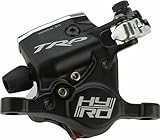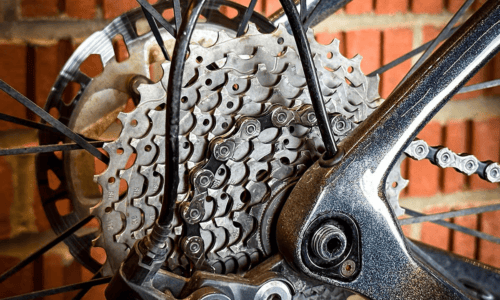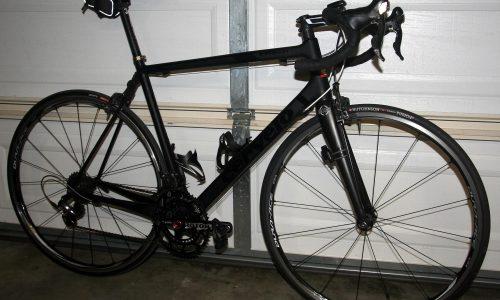Disc brakes have become increasingly popular over the last few years and most modern bikes now opt for disc brakes over the traditional rim brakes.
Disc brakes are a more advanced and expensive braking option for road bikes, typically suited for more aggressive riding. And when it comes to disc brakes, there are two main types: mechanical and hydraulic.
Mechanical brakes use a cable pulling system, more like rim brakes, while hydraulic systems use fluid to transfer the braking force. Here we’ll look at the differences and some great options for each.
The differences between hydraulic and mechanical disc brakes
The biggest difference between the two types of disc brakes is efficiencies. While both options perform better than traditional rim brakes, particularly if it’s wet conditions, mechanical disc brakes struggle to match the efficiency of hydraulic systems.
The reason is because of similar problems to rim brakes: Mechanical disc brakes still sugar from cable friction, meaning the force applied at the lever is going to be greater than the resulting force at the caliper.
Alternatively, hydraulic brakes, which have fluid contained in the master cylinder, has a much more efficient braking mechanism in which fluid, which is already in the system, forces the brake pads together when the lever is pushed.
However, there is another key difference. Hydraulic brake systems actually multiply the amount of effort put into the lever so the braking force is greater than the force you put in.
That’s the main reason for the difference in efficiency and performance. Hydraulic disc brakes give far better performance for less effort. They are also a sealed system, meaning less maintenance is required following set-up.
Main differences between the two:
- Braking medium: Mechanical uses cable, hydraulics uses fluid
- Weight: Mechanical is heaver, hydraulics is lighter
- Performance: Mechanical requires more force to stop and is less sensitive, while hydraulics is more sensitive and requires less braking force
- Price: Mechanical is typically a lot cheaper than hydraulics
- Maintenance: Mechanical needs ongoing maintenance while, once set up, hydraulics doesn’t need ongoing maintenance
Hydraulic disc brakes
First introduced by SRAM and quickly followed by Shimano, the hydraulic system has rapidly improved the development of disc brakes for road bicycles.
It’s more expensive due to needing dedicated shift levers and system but offers the most complete performance if you want to make the switch to disc brakes from traditional rim brakes.
Apart from price, the other downside to hydraulic disc brakes is the lack of simplicity for home mechanics.

Mechanical disc brakes
Mechanical disc brakes function similarly to traditional rim brakes. They are reliant on steel cabled to activate the brake, compressing the brake pad against the rotor when the lever is pulled.
The main benefit of mechanical disc brakes is they are compatible with normal rim brake shifters.

The efficiency difference
As mentioned above, the efficiency difference is arguably the main reason to opt for hydraulic brakes. To put it simply, mechanical brakes cannot compete with hydraulic brakes for efficiency, particularly when wet.
Mechanical brakes outperform rim brakes but don’t have the luxury of reduced brake friction, which hydraulic brakes do.
Hydraulic brakes eliminate that friction and deliver more reliable and responsive braking. Handy when traveling downhill, in rain, at speed!
Basically, when it comes to off-road riding riding and mountain bike riding, hydraulic disc brakes offer superior stopping power and modulation compared to mechanical disc brakes.
Maintenance
Because hydraulic brakes use sealed fluid, dirt can’t get inside, making them pretty much maintenance-free. On the other hand, mechanical brakes can get dirt or grit in the system, which affects braking performance.
That being said, if you are well used to cleaning traditional rim brakes then that shouldn’t put you off mechanical disc brakes, and if hydraulic brakes leak, they are far more complicated to fix.
Design
As with most parts of a road bike, brake design has evolved throughout the years. Changing the location of brake calipers has resulted in a change in design from when rim brakes were required in a set position, and now you see wider tires and rim widths.
Modern road bikes are now increasing to 28-30mm rim width, whereas before almost all road bike tires were restricted to 25mm. The increased width improves comfort and speed, so in that aspect, disc brakes have helped a lot.
They have, of course, made the center of the wheel look slightly beefier, but that has resulted in less wear and tear on the actual rim. Now, designers are left free to focus on aerodynamics rather than ensuring the brakes perform well.
The major downside with disc brakes is you will need to use a different hub than on standard rim brake wheels to make it compatible with the disc brake rotor. Fortunately, there are plenty of options available.
Choosing between them
Clearly, there is a big performance difference. So why would anyone opt for mechanical brakes? The answer is the price. Hydraulics has the best performance, is lighter, more responsive, and reliable, but they are also a lot more expensive.
However, the jump between rim brakes and mechanical disc brakes isn’t that much, so begs the question of whether or not to invest in the first place.
All disc brakes do provide a lot more braking power and performance than rim brakes, particularly when traveling at speed on in wet conditions, but hydraulics takes that performance to another level.
The best disc brake options
Shimano R785
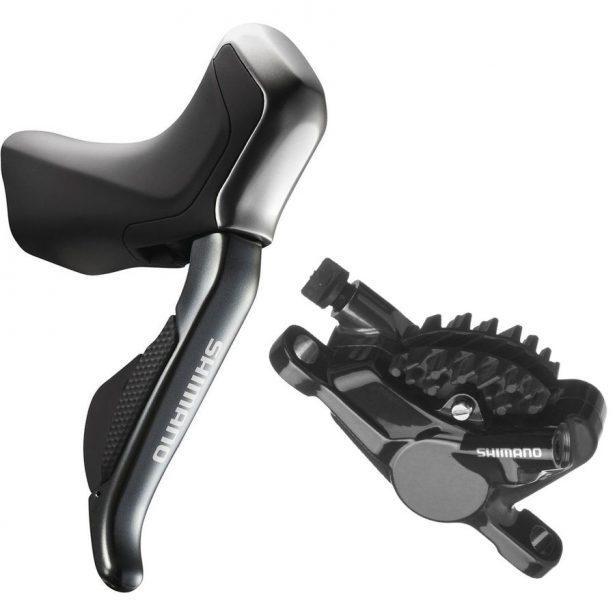
Shimano R785 hydraulic disc brakes are slightly on the heavy side but have superb control and reliability. They really are hard to beat. There is also a mechanical version that delivers good performance at less cost. They weigh 528g.
Yokozuna Motoko
These cable-actuated hydraulic disc brakes are one of the best non-hydro options available. Featuring a reliable cable-actuated disc brake, they are one of the lightest options available.
Weighing just 143g, they are easy to set up and have superb cables, giving them great performance levels.
TRP HY/RD
Again, these cable-actuated hydraulic disc brakes are extremely light, at 205g per calliper. They use an open hydraulic system, which is compatible with both Shimano and SRAM 11 speed road shift levers.
The unique and efficient hybrid design delivers excellent hydraulic control from a cable lever.
TRP SPYKE
The TRP SPYKE is a leading mechanical disc brake, suitable for reliable, dual-sided mechanical braking. They offer decent braking power, but are more suited for MTB riding. They feature a simple pad and a simple cable adjuster. These are really easy to set up.
SRAM Force 22
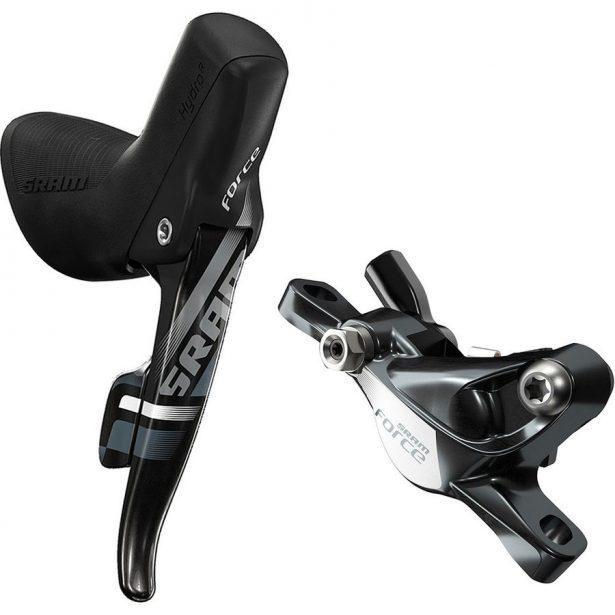
The SRAM Force 22 is a pretty expensive option but delivers serious braking power and great grip. These hydraulic disc brakes weigh 481g and offer superior braking performance in all weather.
Final verdict
Once you try disc brakes, you won’t want to go back to traditional rim brakes. The good news is most modern bikes are being made with disc brake options, so while rim brakes are still alive and kicking, you’re more likely to see disc brakes on newer models.
And, when it comes to disc brakes, hydraulics are the best for performance. Hydraulic disc brakes have a noticeable difference in performance – try hurtling down a steep descent at top speed and braking with rim brakes and then compare that to hydraulic brakes. The difference is mind-blowing.
SRAM and Shimano are the market leaders, but more and more manufacturers, such as TRP, are quickly jumping on the disc brake wagon. And with the benefits of control and power, it’s easy to see why.
In conclusion, the debate between mechanical vs hydraulic disc brakes ultimately comes down to rider preference, skill, and context. With notable differences in their performance, both systems have significant advantages to consider.
Mechanical disc brakes, often valued for their ease of maintenance and adjustment, are well-suited for riders who prefer a straightforward, hands-on approach to their biking gear.
On the other hand, hydraulic disc brakes demonstrate superior stopping power, making them an excellent choice for those tackling steep descents or seeking a smoother, more modulated braking experience.
Each rider should weigh these factors carefully to make an informed decision that aligns best with their biking habits, skill levels, and terrain preferences. Remember, safe and efficient braking is a fundamental aspect of any ride, so choose wisely.

Founder of Vivi Nation, the cycling, running and active living brand. Chris is a sports enthusiast, occasional triathlete and experienced cyclist, having led multiple cycle tours across Europe.


